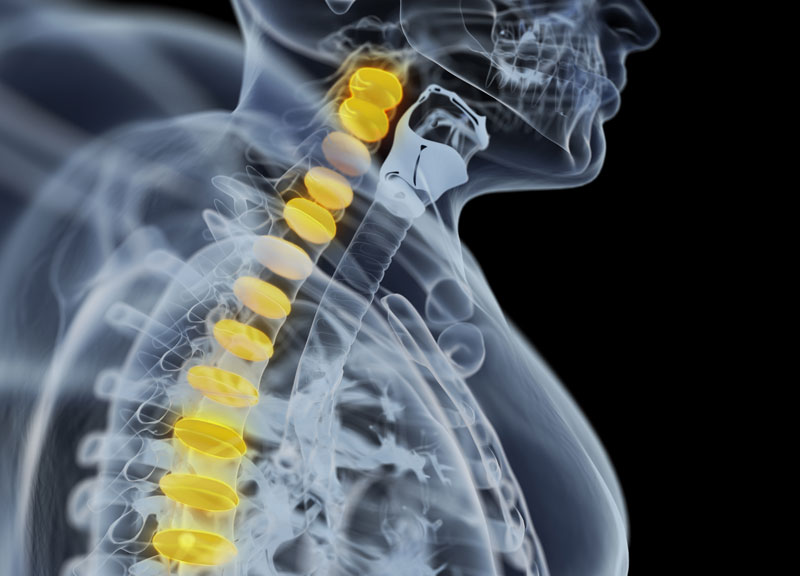Overview
Trigeminal neuralgia is a chronic pain condition affecting the trigeminal nerve that carries sensation from face to the brain. Those with trigeminal neuralgia cannot deal with even mild stimulation of your face such as applying makeup, brushing teeth, etc. These may trigger a sudden shock of excruciating pain.
The patient may also experience short, mild attacks. Trigeminal neuralgia is known to progress and cause longer, more-frequent bouts of unbearable pain. The condition affects women more often than men. Individuals older than 50 are more vulnerable to the disease.
Symptoms of Trigeminal Neuralgia
Common symptoms include the following:
Pain Episodes – Patient experiences episodes of severe, shooting or jabbing pain. This may almost feel like an electric shock. The pain attacks may be triggered by touching the face, brushing teeth, chewing, and speaking.
Some patients may experience bouts of pain that lasts from a few seconds to several minutes. In some cases, the patients may not experience any pain at all, while others will be attacked by episodes of many pain attacks lasting for days, weeks, months or even longer.
Other Symptoms
- Constant pain
- Aching
- Burning feeling (less intense)
- Spasm-like pain
- Sometimes the whole body gets affected by the pain, including teeth, cheeks, jaw, and gums
When to Seek Medical Help?
It is important to see a doctor if you experience prolonged or recurring facial pain, that is not relieved by over-the-counter painkillers.
Causes of Trifeminal Neuralgia
Pressure on Nerve – Trigeminal neuralgia is also referred to as tic douloureux. Functioning of nerve is disrupted when a patient suffers from this condition. The problem usually occurs due to contact between a normal blood vessel (an artery or a vein) and the trigeminal nerve located at the base of the brain. The contact leads to greater pressure on the nerve and malfunction.
Ageing – Ageing is one of the causes of trigeminal neuralgia.
Other Conditions – Trigeminal neuralgia may also be the result of other conditions such as multiple sclerosis or a similar disorder that produces damage to the myelin sheath protecting some specific certain nerves. In rare cases, trigeminal neuralgia can be caused by a tumor that compresses the trigeminal nerve.
Brain Lesions – Some patients may develop trigeminal neuralgia due to a brain lesion or other abnormalities.
Surgery – Sometimes injuries related to surgery can result in trigeminal neuralgia.
Other Causes
Facial trauma or stroke may be some of the reasons for trigeminal neuralgia.
Triggers
The following triggers may set off the trigeminal neuralgia, including:
- Shaving
- Touching your face
- Eating
- Drinking
- Brushing your teeth
- Talking
- Putting on makeup
- Encountering a breeze
- Smiling
- Washing face
How to Prepare for Appointment with Doctor
After observing common symptoms of trigeminal neuralgia, it is time to get an appointment with the primary care provider. Once the initial appointment is over, the patient can meet a neurologist (a doctor trained in the diagnosis and treatment of brain and nervous system conditions). Here are some tips to help you prepare for the same:
- List down any symptoms you’ve been having. Know for how long the symptoms last.
- Take note of any triggers that bring on your facial pain attacks.
- Prepare a list of key medical info. These may include other conditions for which the patient is being treated and the names of any vitamins, medications, or supplements taken by the patient.
- It is wise to take a family member or friend along.
- Jot down questions in advance to ask the doctor at the appointment. Creating list of questions in advance is the best way to make the most of time with your doctor.
Questions you need to ask for a doctor:
- What’s the cause of my pain?
- Do I need any diagnostic tests?
- What treatment approach do you recommend for my condition?
- Are there any possible side effects of medications you recommend?
- Will I need treatment and care for the rest of my life?
- What is the rate of improvement for my symptoms?
- Is surgery an option?
What to Expect?
The doctor will ask a set of questions. The Patient must be prepared to answer them to help doctor come up with appropriate an treatment plan:
- What symptoms do you face?
- Where are the symptoms located?
- When did you first develop these symptoms?
- Has the symptom gotten worse over time?
- What is the frequency of facial pain? What triggers facial pain?
- How long does facial pain attack typically last?
- Has the symptoms affected your quality of life? How?
- Did you ever have dental surgery?
- Did you have any surgery on or near your face (sinus surgery)?
- Did you face any facial trauma, such as an accident / injury to you face?
- Did you try any treatments for your facial pain so far? Has anything helped?
Tests and Diagnosis
The diagnosis is based on pain description, including the following listed below:
Type – Trigeminal neuralgia pain is sudden, shock-like experience for brief periods.
Triggers Factors – Pain experienced by patients is brought on by light stimulation of cheeks including procedures such as talking, eating, or a cool breeze touching the cheeks.
Location – Parts of a face affected by pain will let the doctor determine if the trigeminal nerve is involved.
The doctor may conduct various tests to diagnose trigeminal neuralgia. These help with determining underlying causes for condition, including the following:
Magnetic resonance imaging (MRI) – Patient’s head is scanned to determine whether or not multiple sclerosis or a tumor has caused trigeminal neuralgia. The doctor may inject a dye into a blood vessel. This helps with getting a clear view of vein and the arteries. The dye also highlights the flow of blood (magnetic resonance angiogram).
The Neurological Exam – Doctor will touch and examine parts of patient’s face to determine precisely where the pain has occurred and presence of trigeminal neuralgia affecting branches of the trigeminal nerve.
Reflex Tests – The tests help medical experts determine causes of symptoms and whether these are caused by a compressed nerve or any other condition.
Additional Tests – The facial pain may be caused by different conditions. Hence, it is crucial to get an accurate diagnosis. Additional tests will be ordered by doctors to rule out other conditions.
Alternative Medications
The effect of alternative treatments hasn’t been studied as well as surgical procedures or medications. There is very little evidence to support their positive effect. However, a number of individuals have already found a great deal of improvement with these treatments. It is wise to check with the doctor prior to trying out an alternative treatment option as it may interact with other treatments.
Some of the alternative treatments that have already been used for trigeminal neuralgia including the following:
- Nutritional therapy
- Acupuncture
- Vitamin therapy
- Biofeedback
- Chiropractic
Coping and Support
It is tough to live with trigeminal neuralgia. The disorder is known to affect one’s interaction with family and friends. Patients may also experience significant productivity at work, and the overall quality of your life.
A support group can help understanding the disease well and possible advanced treatments available. Patients can share their own experiences with others.




